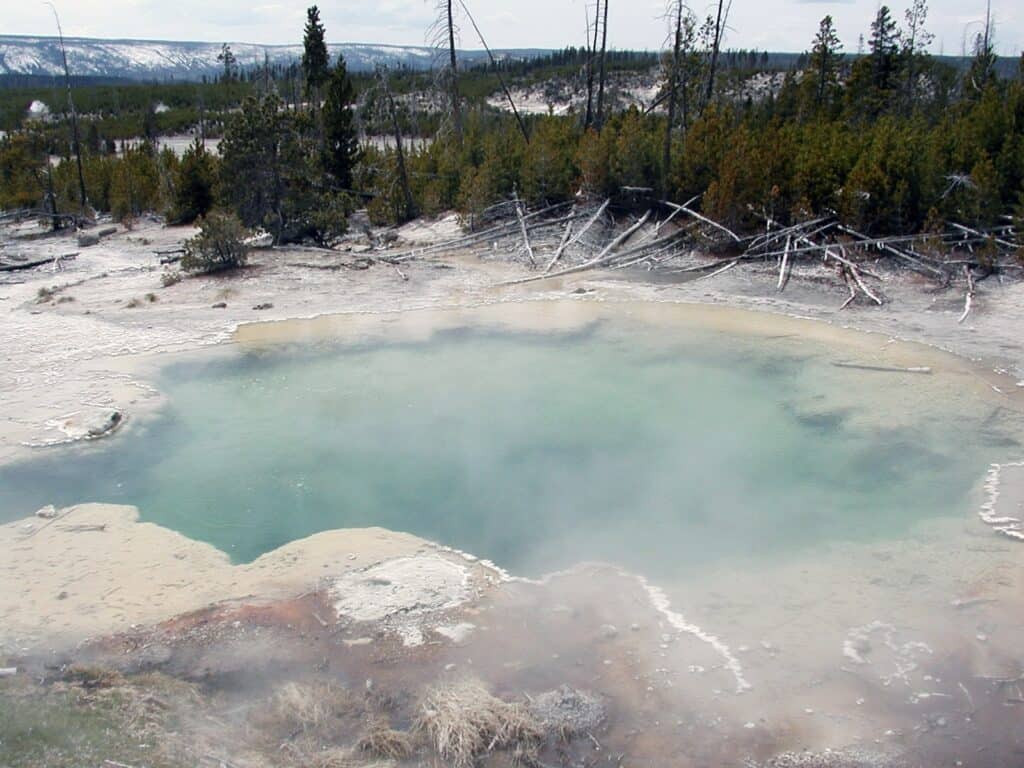Some geothermal energy is available where water reaches the surface at hot springs like this one in Yellowstone National Park in Wyoming. Bodies of hot groundwater can be found in many areas with volcanic or tectonic activity, and these groundwater reservoirs can reach the surface, creating geysers and hot springs.
But because most of Earth’s geothermal energy is dry and at depth, we must know something about how the temperature in the earth increases with depth so that we can drill to reach this heat source.

Geothermal Gradient
The rise of temperature vs. the increase in depth within the earth is called the geothermal gradient. This gradient can vary in different spots across the planet; a typical value for a geothermal gradient is 25 ˚Celsius per 1 kilometer (25 ˚C/km) or 2 °Fahrenheit (°F/100 ft).2National Geographic. (n.d.). Geothermal Energy. National Geographic Education. https://education.nationalgeographic.org/resource/geothermal-energy
Steam and hot water pockets can serve as geothermal sources for generating electricity; however, most geothermal power plants must enhance dry geothermal through drilling and injection of water. Typically, the water injected into the ground through one well is heated at depth and that thermal energy is returned to the surface through another well as hot water or steam. Geothermal drilling can range from a few feet (low temperature geothermal) to 2–3 miles deep.3Office of Energy Efficiency & Renewable Energy. (n.d.) Geothermal Basics. https://www.energy.gov/eere/geothermal/geothermal-basics
Image Credits
- Geothermal hot spring: Patrick Laney, NREL 13104